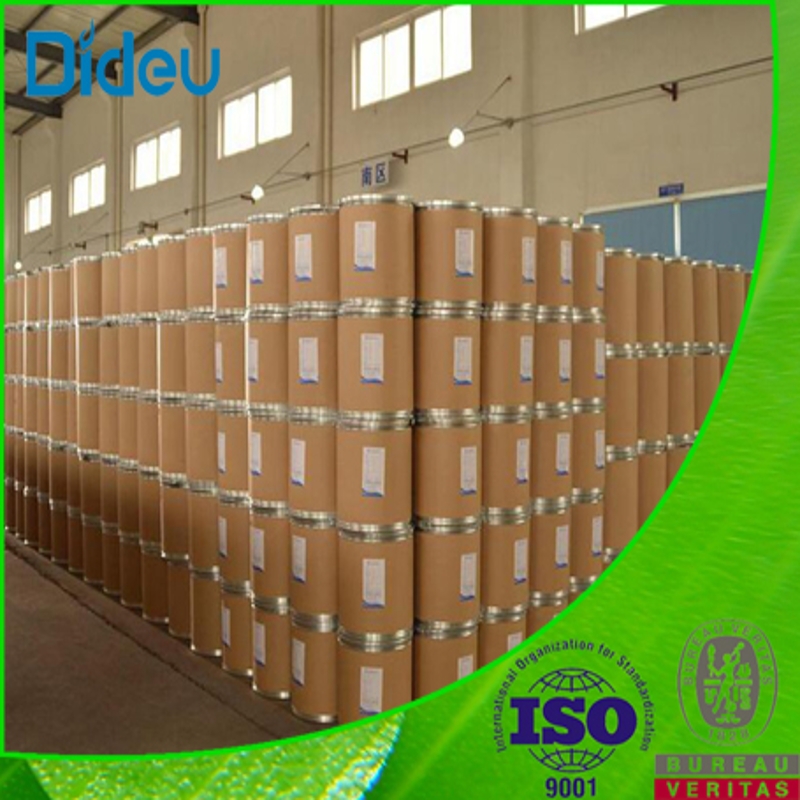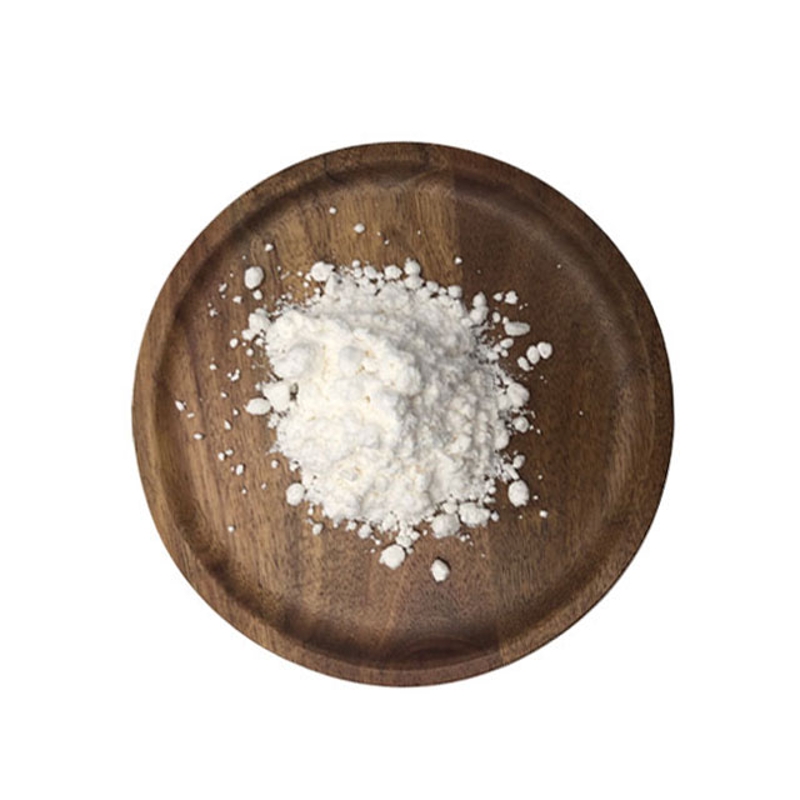-
Categories
-
Pharmaceutical Intermediates
-
Active Pharmaceutical Ingredients
-
Food Additives
- Industrial Coatings
- Agrochemicals
- Dyes and Pigments
- Surfactant
- Flavors and Fragrances
- Chemical Reagents
- Catalyst and Auxiliary
- Natural Products
- Inorganic Chemistry
-
Organic Chemistry
-
Biochemical Engineering
- Analytical Chemistry
-
Cosmetic Ingredient
- Water Treatment Chemical
-
Pharmaceutical Intermediates
Promotion
ECHEMI Mall
Wholesale
Weekly Price
Exhibition
News
-
Trade Service
The introduction study shows that immune checkpoint inhibitor monotherapy has a promising application in the field of metastatic castration-resistant prostate cancer (mCRPC)
.
High-dose radiation therapy may have a synergistic antitumor effect with immune checkpoint inhibitors
.
To this end, we designed this study to evaluate the efficacy and safety of the PD-L1 inhibitor avelumab and stereotactic ablative radiation therapy (SABR) in mCRPC
.
The results were recently published on EUROPEAN UROLOGY
.
Background Over the past decade, life-extending therapies for patients with mCRPC have been greatly expanded, including second-generation androgen receptor (AR) pathway inhibitors, taxane chemotherapy drugs cabazitaxel, and PARP inhibitors
.
Although PD-1/PD-L1 and CTLA-4 inhibitors have made some progress in urological malignancies, the immunosuppressive prostate tumor microenvironment remains a major challenge for their clinical application
.
Increased somatic mutations lead to elevated levels of tumor neoantigens, which may improve immune system recognition
.
The tumor mutational burden in prostate cancer is generally lower than in other epithelial cell carcinomas
.
Strategies to increase tumor neoantigen levels through immune checkpoint inhibitors combined with local/systemic therapy have been proposed, and SABR is an attractive option
.
Studies have shown that SABR can exert synergistic anti-tumor effects by increasing tumor neoantigen formation, inducing inflammatory cytokine production, and recruiting tumor-specific effector T cells
.
The synergistic effect of SABR and blocking the PD-1 pathway has been demonstrated in preclinical studies in advanced lung, renal cell, and urothelial carcinoma with encouraging results
.
Study Methods Treatment regimen Patients received avelumab 10 mg/kg every two weeks for 24 weeks (12 cycles)
.
A single dose of SABR (20 Gy) was administered to 1 or 2 lesions between the first and second doses of avelumab
.
Primary and Secondary Study Endpoints The primary study endpoint was disease control rate (DCR), defined as complete response (CR) or partial response (PR) or stable disease (SD)/non-CR/non-progressive disease (PD) ≥ 6 months
.
Secondary endpoints included objective response rate (ORR), prostate-specific antigen (PSA), response rate, time to PSA progression (TTPP), radiographic progression-free survival (rPFS), overall survival (OS), and safety
.
Exploratory Endpoint Plasma Cell-Free DNA/RNA (cfDNA/cfRNA) Exploratory Biomarker Analysis
.
Results From November 2017 to July 2019, a total of 41 patients were screened, of which 31 were included in the study (see Figure 1)
.
Figure 1.
Study flow chart.
Demographics and disease data are shown in Table 1
.
Table 1 shows that most of the enrolled patients had received systemic mCRPC therapy (71% of patients had ≥2 lines of therapy), had more metastatic lesions and a higher risk of disease (81% of patients had >5 lesions, 42% of patients had bone lesions > 10, 65% of patients had disease symptoms requiring analgesia, and median PSA doubling time was 2.
2 months)
.
As of August 6, 2020, patients who survived had a median follow-up of 18.
0 months; 16 patients had radiographic progression
.
As of the last follow-up, 17 patients had died
.
Twenty-one of the 31 patients (68%) received further therapy after the end of the study, with a median time from initiation of avelumab to the next systemic therapy of 7.
5 months (IQR 3.
9-12)
.
Table 1.
Baseline characteristics of patients A total of 70 metastatic lesions underwent SABR, the most common being bone (n=57, 81%) and soft tissue (n=13, 19%)
.
Twenty-two (71%) patients received SABR for bone metastases only, and the remaining 9 patients received SABR for soft tissue metastases (n=3 soft tissue irradiation only, n=6 bone/soft tissue irradiation)
.
After the treatment regimen was changed to allow patients to be treated for more than 12 cycles, the median avelumab treatment cycle was 12 (IQR 9-19), and 7 of 17 patients (41%) received more than 12 cycles of therapy
.
Antitumor activity Avelumab in combination with SABR met the primary endpoint of the study
.
DCR was 48% (15/31; 95% Cl 30-67%; see Table 2)
.
Among patients with RECIST-measurable disease, the ORR was 31% (5/16; 95% Cl 11-59%; see Table 2); 5 patients achieved PR (Figure 2A)
.
The median patient TTPP was 3.
6 months (95% Cl 3.
1-8.
0)
.
Significant PSA responses were observed in 7 of 31 patients (23%, Table 2)
.
Four of the five patients achieved radiographic PR with >90% deep PSA response (n=3, nodular soft-tissue disease; n=1, soft-tissue-bone metastases)
.
The median rPFS was 8.
4 months (95% Cl 4.
5-NR, Figure 2D)
.
The median OS was 14.
1 months (95% Cl 8.
9-NR, Figure 2E), and the 6-month and 12-month survival rates were 87% and 61%, respectively
.
Table 2 Response resultsFigure 2 Antitumor activity and safety 28 patients (90%) experienced treatment-related adverse events (TRAEs), of which 5 were grade 3-4 TRAEs (16%), and 3 (10%) required high Dose cortisol therapy (without immunomodulators) and discontinue therapy
.
The most common TRAE was infusion-related events (Grade 1, 2, 6.
0%; Grade 2, 10, 32%)
.
Table 3 Molecular characteristics of treatment-related adverse events The results of plasma sample analysis suggest that analysis of cfDNA/cfRNA may be indicative of disease response and drug resistance
.
Patient 01-014 had a TP53 frameshift mutation at baseline
.
Following avelumab treatment, the TP53 allele mutation rate and percentage decreased in serial ctDNA samples, a change that preceded the radiographic response and was accompanied by increased PSA levels and growth of target lesions (Figure 3B).
)
.
The data of patient 01-006 demonstrate the value of low-throughput whole-genome sequencing (LP-WGS)
.
The plasma AR elevation was most pronounced at baseline, and serial sample analysis revealed additional somatic features, including a more than 3-fold (1.
4-11.
6-fold) increase in absolute AR copy number, with features of neuroendocrine differentiation (including TP53 loss, PTEN loss) , AURKA increased, Figure 3C)
.
Figure 3 Molecular analysis of cfDNA/RNA conclusion In refractory mCRPC, avelumab combined with SABR showed encouraging efficacy, nearly half of patients achieved durable disease control, and about one-third of patients were treated with radiation and All non-radiation lesions achieved objective remission
.
Toxicity of the combination regimen was acceptable, with only 10% of patients discontinuing treatment due to adverse events
.
This trial supports further clinical studies evaluating the efficacy of SARB combined with avelumab
.
Reference: Kwan EM, Spain L, Anton A, et al.
Avelumab Combined with Stereotactic Ablative Body Radiotherapy in Metastatic Castration-resistant Prostate Cancer: The Phase 2 ICE-PAC Clinical Trial.
Eur Urol.
2022 Mar;81(3): 253-262.
Editor: LR Reviewer: XY Execution: LR







